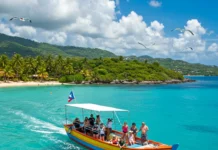Why Visit Puerto Rico’s Bioluminescent Bays at Night?
Few natural spectacles rival the bioluminescent bays of Puerto Rico after sunset. As darkness falls, the water comes alive with a radiant blue-green glow, swirling around paddles, hands, and even swimming fish. Experiencing this phenomenon firsthand is both enchanting and humbling—a vivid reminder of nature’s delicate power.
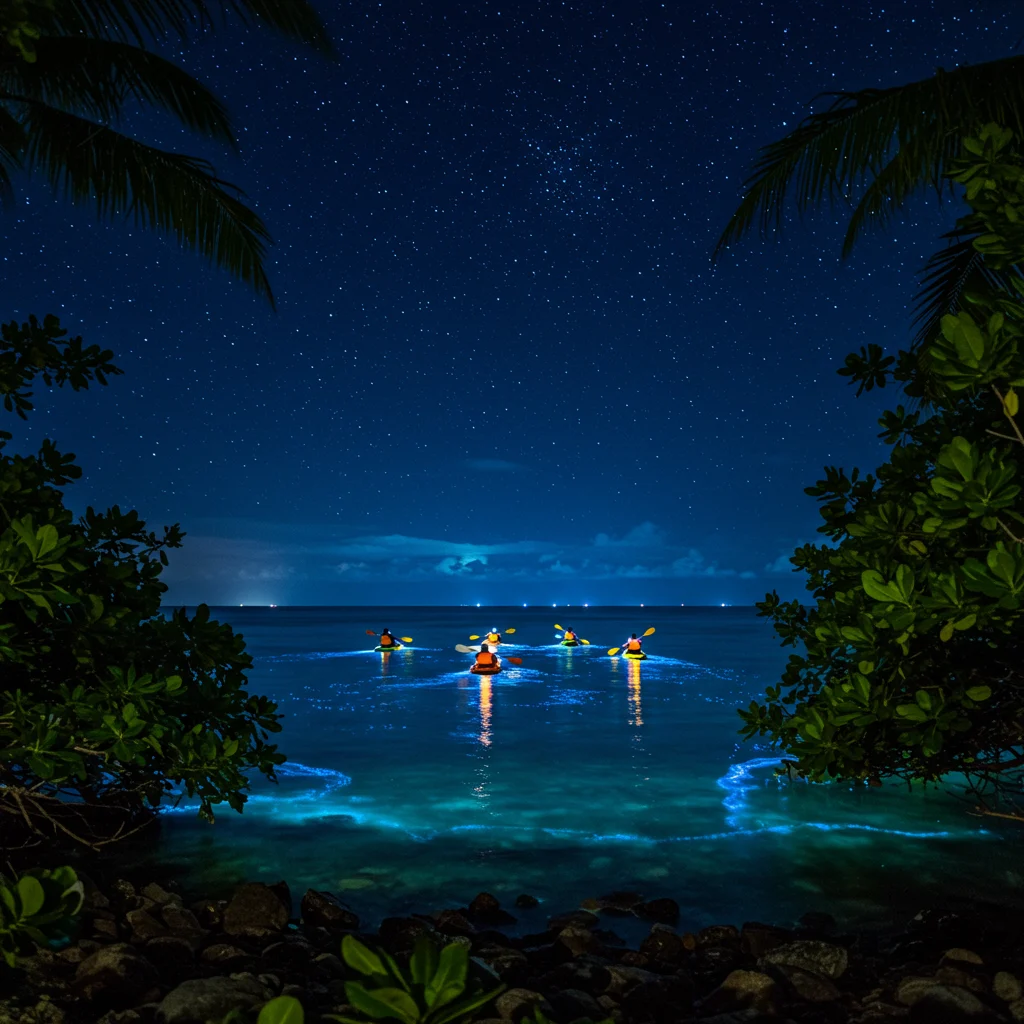
Travelers from around the world seek out these luminous waters, not only for their beauty but also for the sense of wonder they inspire. The bays offer a unique opportunity to witness a rare biological event in some of the world’s most pristine settings.
What Is Bioluminescence?
Bioluminescence refers to the production and emission of light by living organisms. This phenomenon occurs in a variety of environments, from deep-sea trenches to tropical lagoons, and serves purposes ranging from communication to defense.
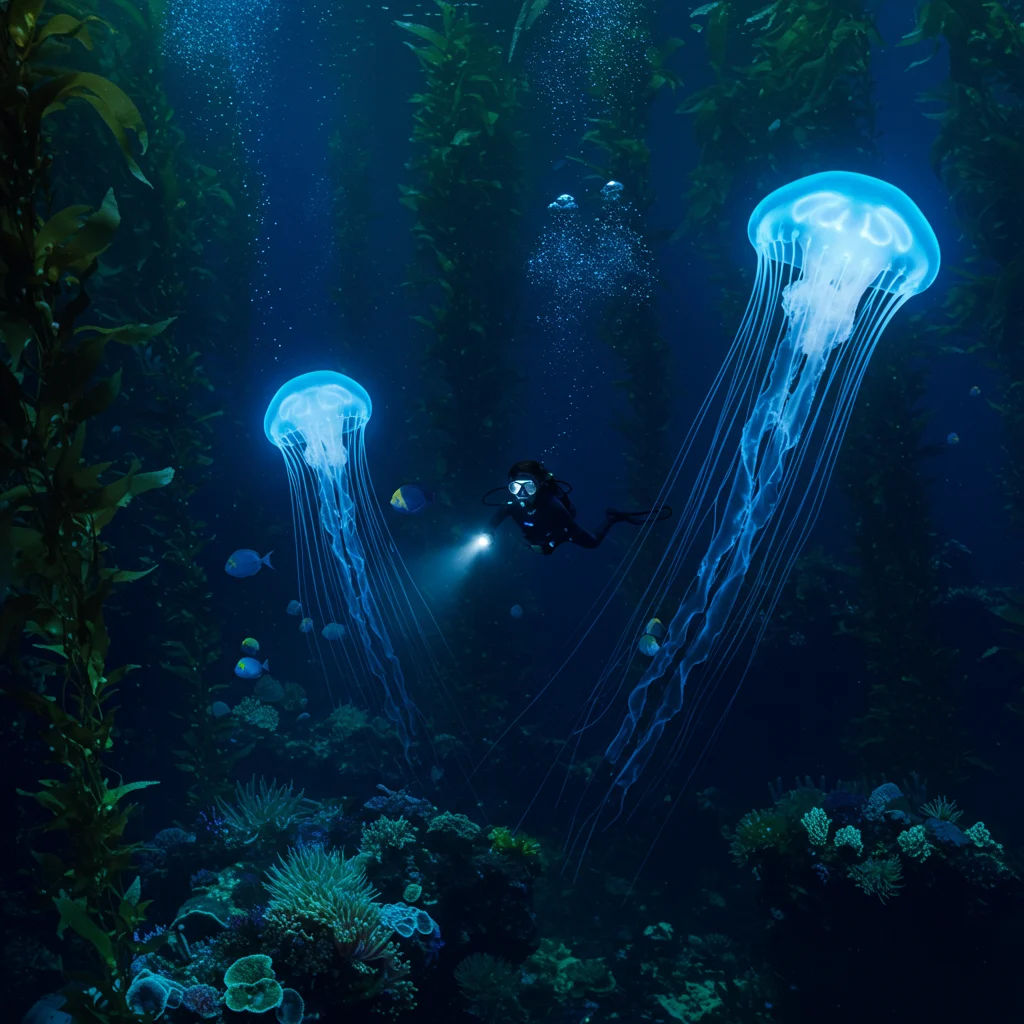
How Does Bioluminescence Work?
The mechanics behind this natural light show are as fascinating as the glow itself. Bioluminescence is a chemical process that creates visible illumination, often triggered by movement or environmental changes.
The Science Behind the Glow
At its core, bioluminescence results from a reaction between luciferin (a light-emitting molecule) and luciferase (an enzyme). When these substances interact in the presence of oxygen, light is produced—without generating heat. This “cold light” is what makes the waters in Puerto Rico shimmer when disturbed.
Key Organisms Responsible for the Light
In Puerto Rico’s bays, the primary light-makers are microscopic plankton called dinoflagellates. When agitated by a paddle, hand, or fish, these tiny organisms emit pulses of blue-green light. Some bays also contain other bioluminescent creatures, such as comb jellies, adding subtle variations to the glow.
Why Is Puerto Rico a Bioluminescent Hotspot?
Puerto Rico’s reputation as a bioluminescent destination is well-earned. The island is home to three of the world’s few remaining bioluminescent bays, each offering a distinct experience. But what makes Puerto Rico such a haven for this rare phenomenon?
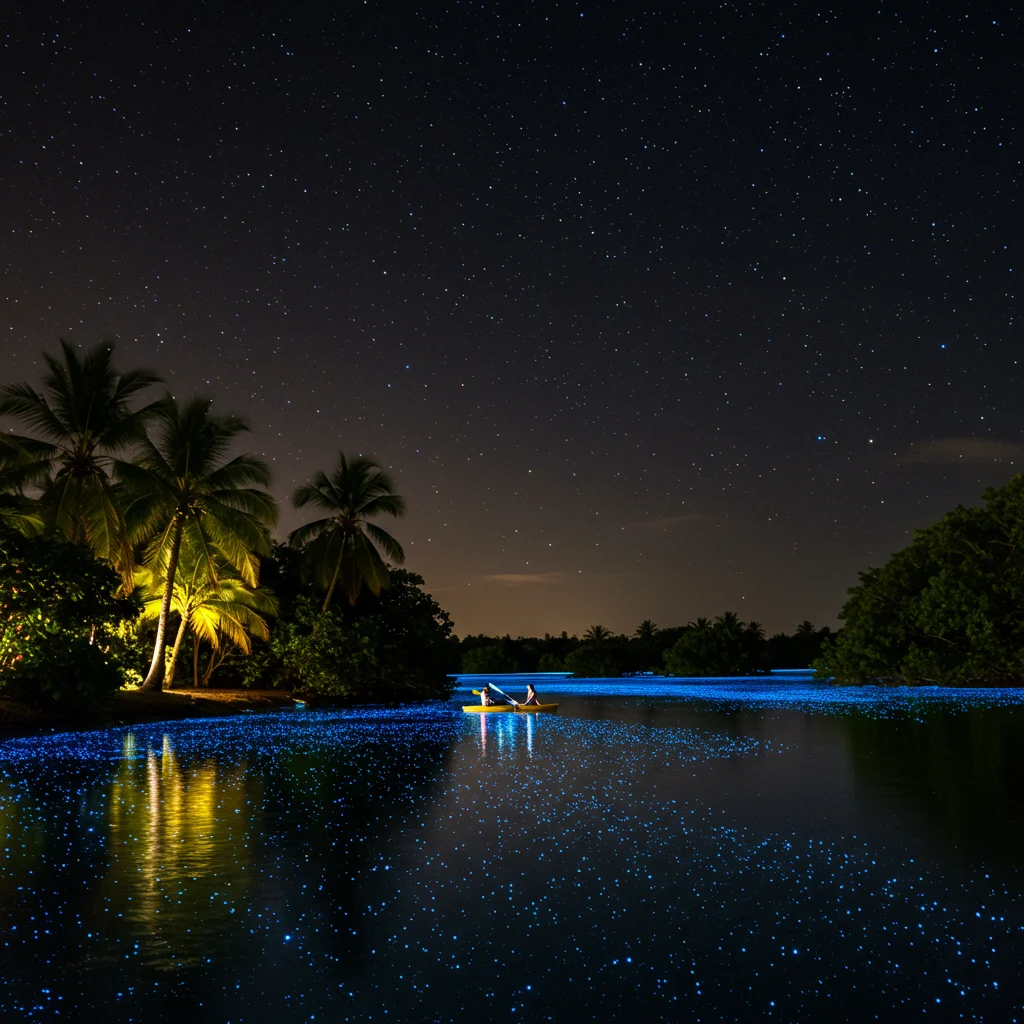
What Unique Environmental Factors Contribute?
The bays’ exceptional brightness is the result of a delicate balance of mangrove forests, shallow waters, and limited ocean exchange. These conditions allow dinoflagellate populations to thrive, undiluted by tides or currents. Nutrient-rich runoff from mangroves further boosts their numbers, creating ideal circumstances for sustained bioluminescent displays.
What Is the History of Bioluminescent Bays in Puerto Rico?
The luminous bays have been known to locals for centuries, with early Taíno inhabitants weaving them into their legends. Spanish explorers marveled at the glowing waters, sometimes fearing supernatural causes. Today, these natural wonders are protected treasures, drawing scientists and eco-tourists alike.
Where Are Puerto Rico’s Bioluminescent Bays Located?
The island boasts three celebrated bioluminescent bays, each with its own character and appeal. Choosing the right one depends on your interests, travel plans, and sense of adventure.

Mosquito Bay (Vieques): The World’s Brightest
Mosquito Bay on Vieques Island holds the Guinness World Record for brightest bioluminescent bay. Its secluded location and healthy mangrove ecosystem support some of the densest dinoflagellate populations in the world, resulting in breathtaking displays.
Laguna Grande (Fajardo): The Accessible Wonder
Laguna Grande in Fajardo is the easiest bay to reach from San Juan. The tour begins with a paddle through a mangrove-lined channel—where the first hints of glow appear—before opening into a serene lagoon alive with shimmering light.
La Parguera (Lajas): The Only Swimmable Bay
La Parguera in Lajas is unique as the only bay where swimming is permitted. Here, visitors can slip into the water and watch the glow dance around their bodies, creating an intimate connection with the bioluminescent phenomenon.
How Do Puerto Rico’s Three Bioluminescent Bays Compare?
Each bay offers a distinct experience. Mosquito Bay is the brightest, Laguna Grande offers accessibility, and La Parguera allows swimming. Factors like travel logistics and preferred activities can help you decide which bay is best suited to your trip.
How to Choose the Right Bay for Your Visit?
Consider your itinerary, transportation needs, and desired experience. If brightness and spectacle matter most, Mosquito Bay is unmatched. For convenience, Laguna Grande is ideal. If you wish to swim in glowing waters, La Parguera is your best option. For a firsthand account of the emotional impact, you can read about unexpected joy found in Puerto Rico’s bioluminescent bay.
When Is the Best Time of Year to Experience Bioluminescence?
Timing your visit can make a significant difference in the quality of your experience. While the bays glow year-round, certain conditions enhance their brilliance.
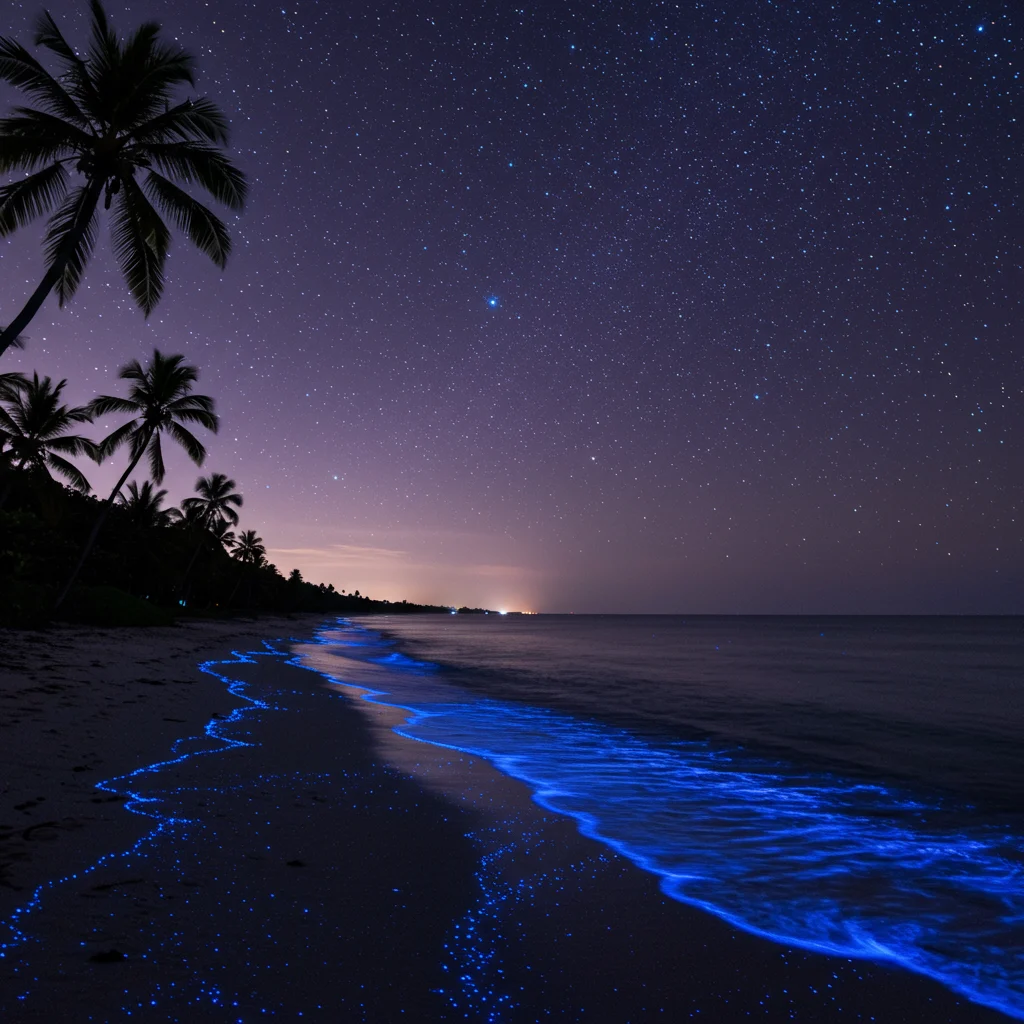
How Do Moon Phases Affect the Glow?
The glow is most vivid during the new moon or when the moon is below the horizon. Bright moonlight can diminish the perceived intensity, so many tours are scheduled around darker nights for optimal viewing.
What Weather Considerations Should You Keep in Mind?
Clear, calm nights provide the best visibility. Heavy rain or strong winds can stir up sediment, reducing clarity. The dry season (December to April) often offers the most reliable conditions, but it’s wise to check forecasts and book accordingly.
How Should You Plan Your Bioluminescent Bay Adventure?
Proper planning ensures a smooth and memorable visit. Understanding transportation options and local logistics will help you make the most of your journey.

How to Get to Each Bioluminescent Bay
Access varies depending on the bay. Each destination requires its own approach, whether by ferry, car, or even plane.
Transportation Tips for Vieques
To reach Vieques, you can take a ferry from Ceiba or a short flight from San Juan or Isla Grande airports. Once on the island, local taxis or rental vehicles transport visitors to Mosquito Bay.
Reaching Laguna Grande from San Juan
Laguna Grande is about an hour’s drive from San Juan. Many tour operators offer shuttle services, or you can rent a car for flexibility. The route passes through lush countryside, setting the stage for your nighttime adventure.
Traveling to La Parguera
La Parguera lies on Puerto Rico’s southwest coast. It’s best reached by rental car, as public transport options can be limited. The scenic drive provides opportunities to enjoy the island’s diverse landscapes along the way.
What Can You Expect on a Bioluminescent Bay Tour?
Each tour offers a different perspective on the glowing waters. Understanding your options helps you choose the experience that matches your comfort level and sense of adventure.
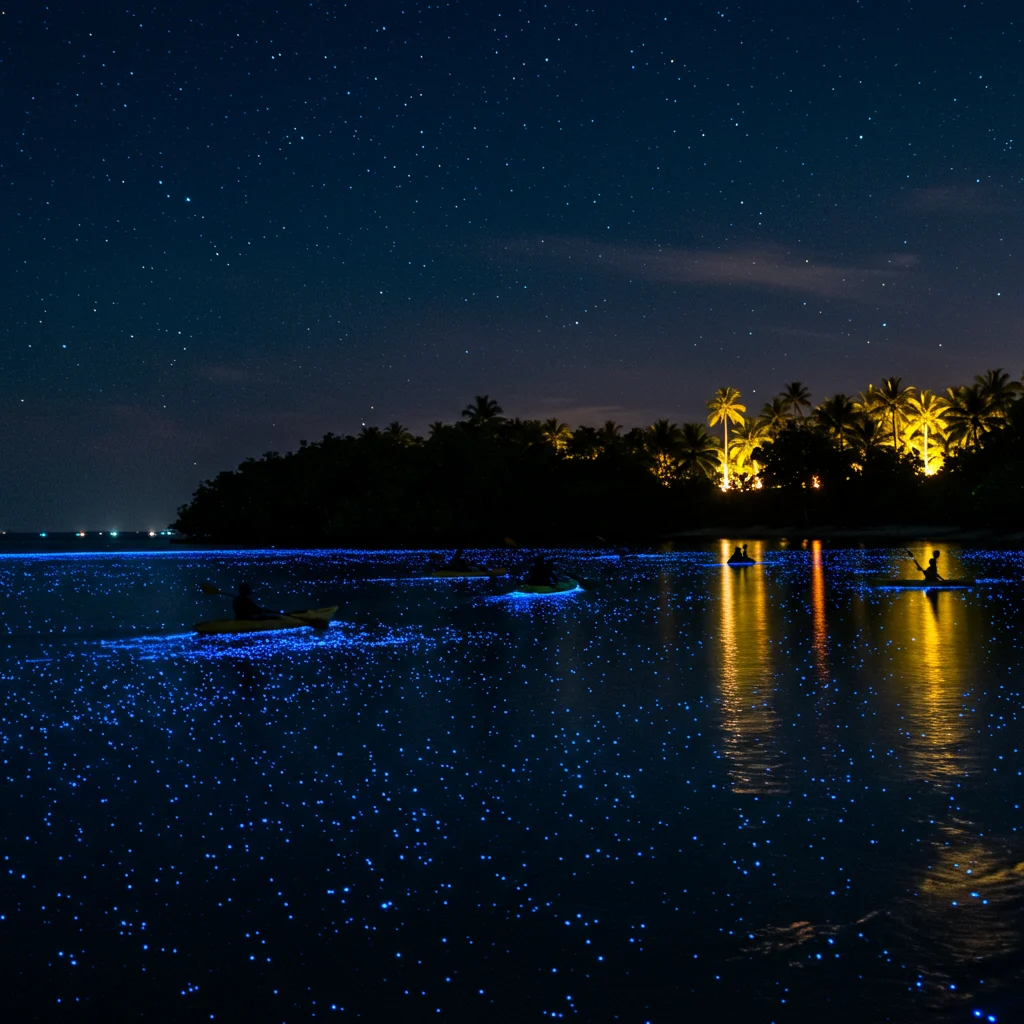
What Types of Tours Are Available?
Tours are typically offered by kayak, electric boat, or, in some locations, as guided swims. Each has unique advantages and considerations.
Kayak Tours: The Most Popular Option
Kayak tours are the most immersive and eco-friendly way to experience the bays. Gliding across the dark water, every paddle stroke ignites a trail of sparkling blue. We recommend reading about the unexpected delights of night kayaking in Puerto Rico for a sense of what awaits.
Electric Boat Tours: A Relaxed Experience
For those who prefer a more relaxed pace, electric boat tours offer comfort and accessibility. These silent vessels glide gently, allowing visitors to enjoy the glow without physical exertion.
Swimming Tours: Is It Allowed?
Swimming is only permitted in La Parguera. Here, guests can float in the radiant water, watching the glow swirl around their limbs—a magical, tactile experience not available at the other bays.
What Should You Bring on Your Tour?
Preparation is key to a comfortable and enjoyable night on the bay.
Essential Packing List
- Lightweight, water-resistant clothing
- Insect repellent (eco-friendly)
- Reusable water bottle
- Waterproof flashlight or headlamp (red light preferred)
- Dry bag for electronics
- Photo ID and confirmation of your booking
What to Wear for Nighttime Excursions
Quick-drying fabrics and sturdy water shoes are ideal. Bring a light jacket, as breezes can pick up after dark. Avoid lotions or sunscreens that could harm the delicate ecosystem.
What Are the Best Photography Tips for Capturing the Glow?
Photographing bioluminescence can be challenging, but with the right approach, you can capture memorable images.
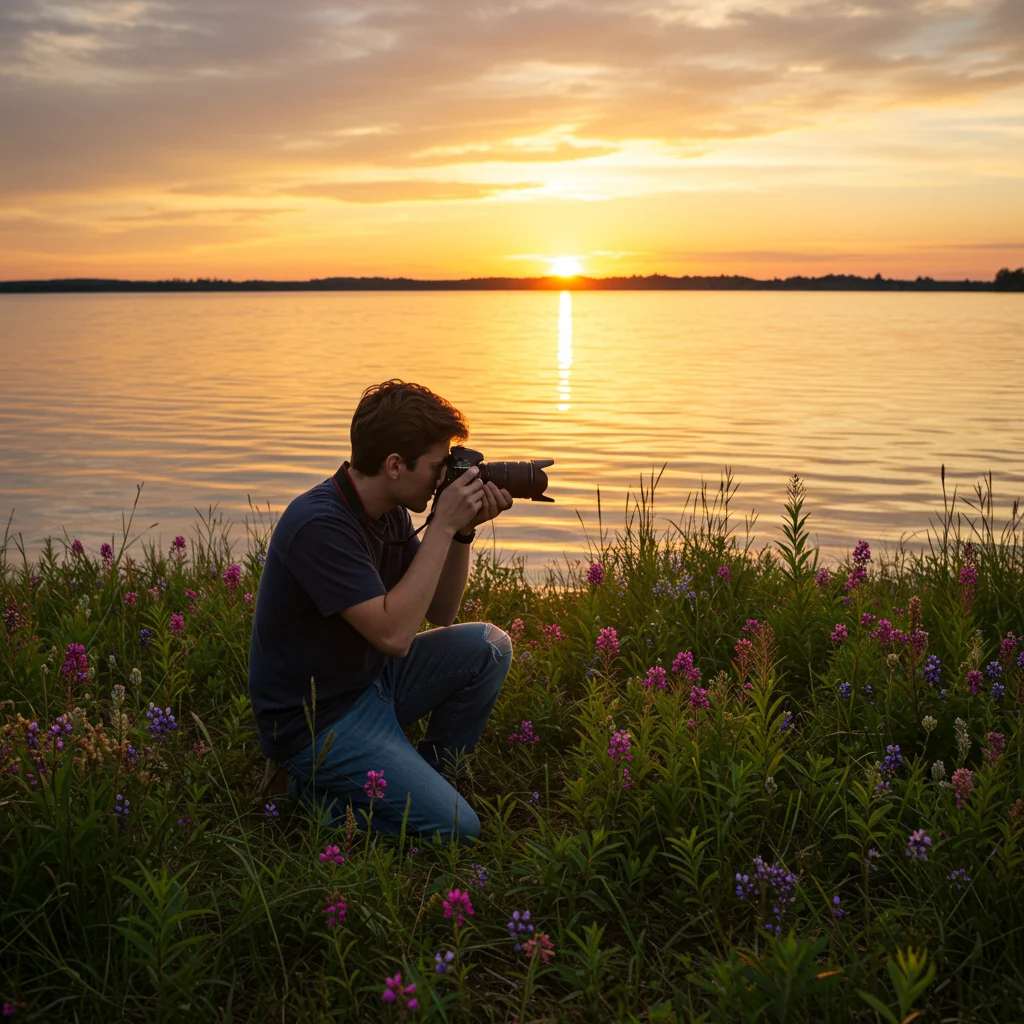
Can You Photograph Bioluminescence?
While the glow is most vivid to the naked eye, cameras require specific settings to record it faithfully. Patience and experimentation are key.
Best Camera Settings for Low Light
- Use a high ISO (1600 or above)
- Set a wide aperture (f/2.8 or lower)
- Employ long exposure times (10–30 seconds)
- Stabilize your camera with a tripod
Recommended Equipment
- DSLR or mirrorless camera with manual controls
- Sturdy tripod
- Remote shutter release or timer
- Waterproof housing or dry bag
Tips for Smartphone Photography
Use manual or “Pro” modes, if available, to adjust ISO and exposure. Hold your phone steady or rest it on a firm surface to minimize blur. Avoid using flash, as it will overpower the subtle bioluminescent light.
What Safety Tips Should You Follow for Nighttime Bay Visits?
While bioluminescent bay tours are generally safe, nighttime conditions and unfamiliar waters require extra care.
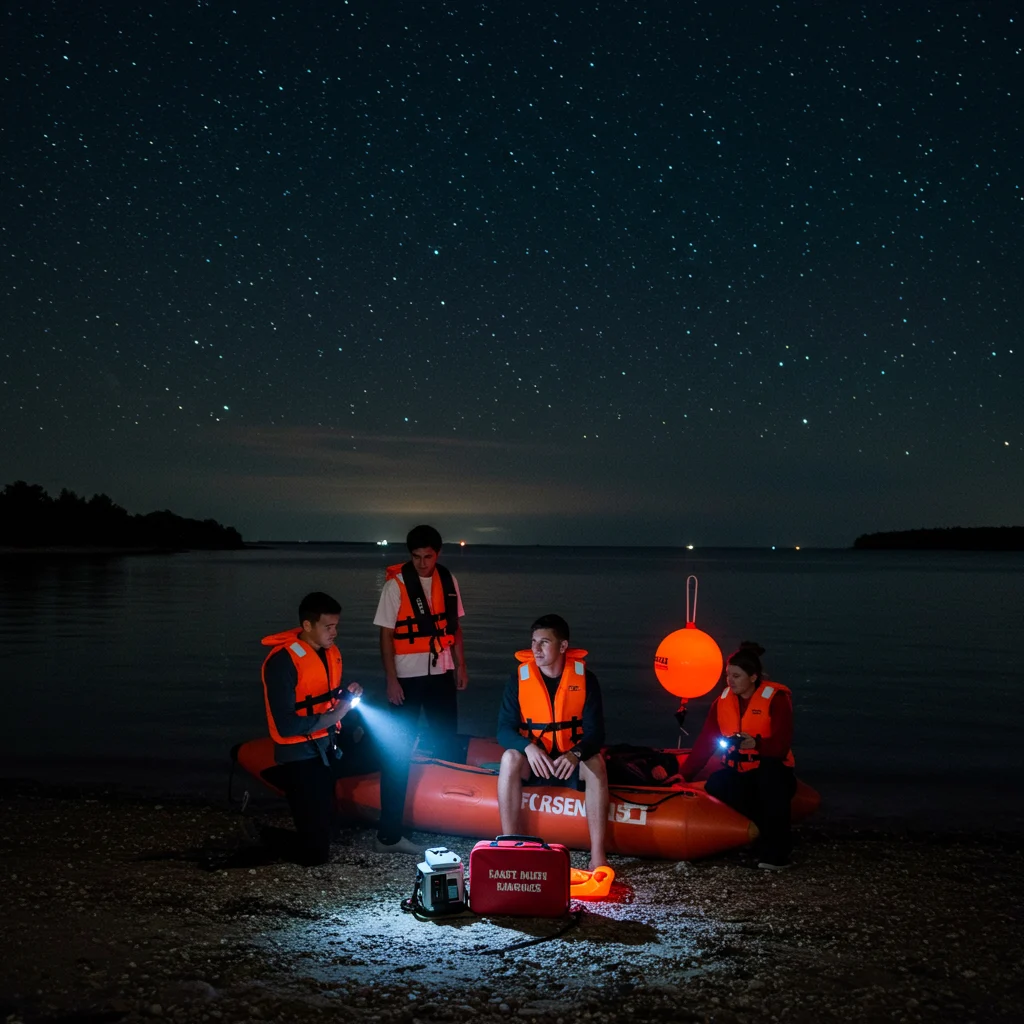
How Can You Stay Safe on the Water?
- Always wear a life jacket
- Follow your guide’s instructions closely
- Stick with your group and avoid straying into dark or isolated areas
- Notify guides of any medical conditions in advance
What Should You Know About Tour Guide Credentials and Regulations?
Choose providers with certified guides and proper permits. Reputable operators conduct safety briefings and provide well-maintained equipment, ensuring a worry-free experience.
What Etiquette Helps Protect the Bioluminescent Bay Ecosystem?
Responsible tourism is vital to preserving these fragile habitats for future generations.
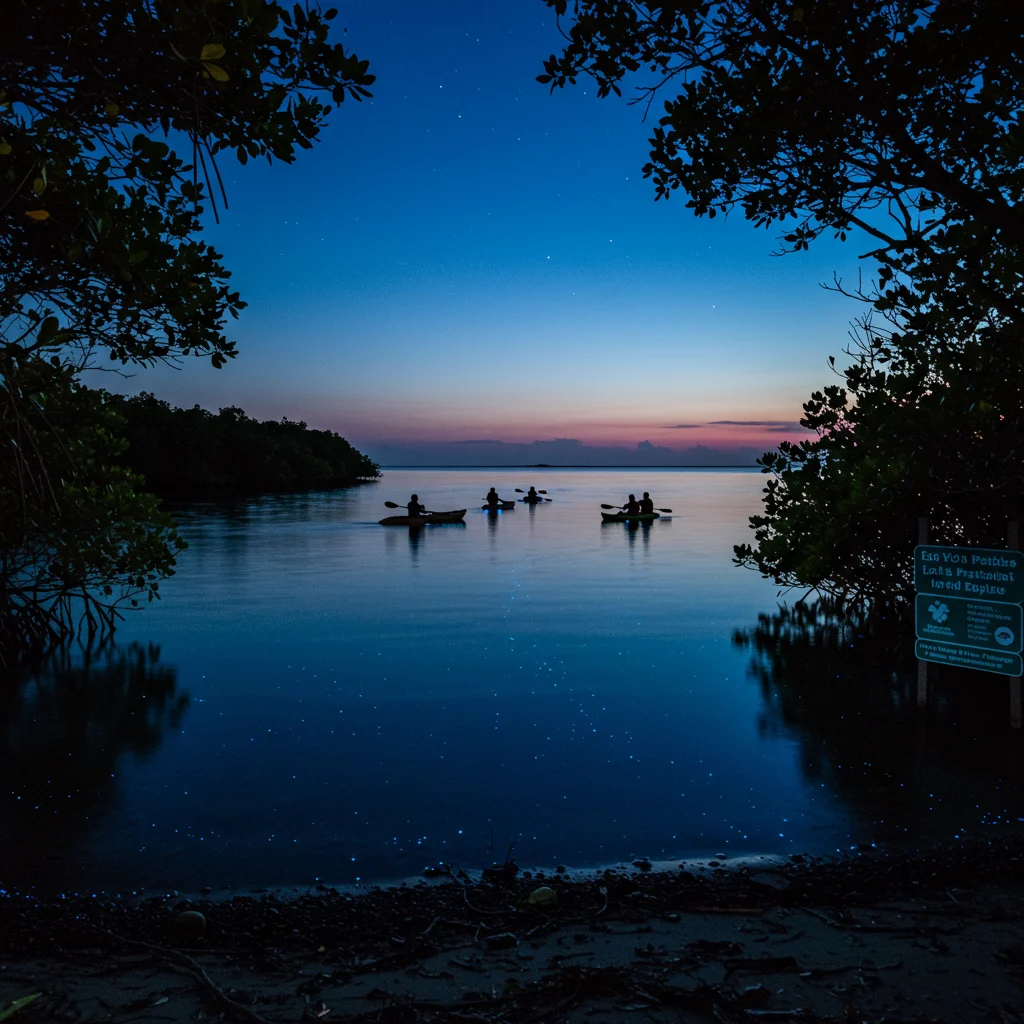
What Should You Avoid During Your Visit?
- Do not use chemical sunscreens or insect repellents that can harm marine life
- Avoid touching or collecting organisms
- Refrain from littering or introducing foreign objects to the water
- Minimize noise and light pollution
How Can Tourists Help Conserve the Bays?
Support operators who prioritize sustainability and environmental stewardship. Stay informed about local regulations and share your knowledge with fellow travelers. For a deeper understanding of bioluminescence’s ecological importance, learn more about the magic of bioluminescence in Puerto Rico’s waters.
What Is the Impact of Tourism on Bioluminescent Bays?
Increased visitation has both positive and negative consequences for the bays. Thoughtful management and community involvement are crucial to maintaining their brilliance.
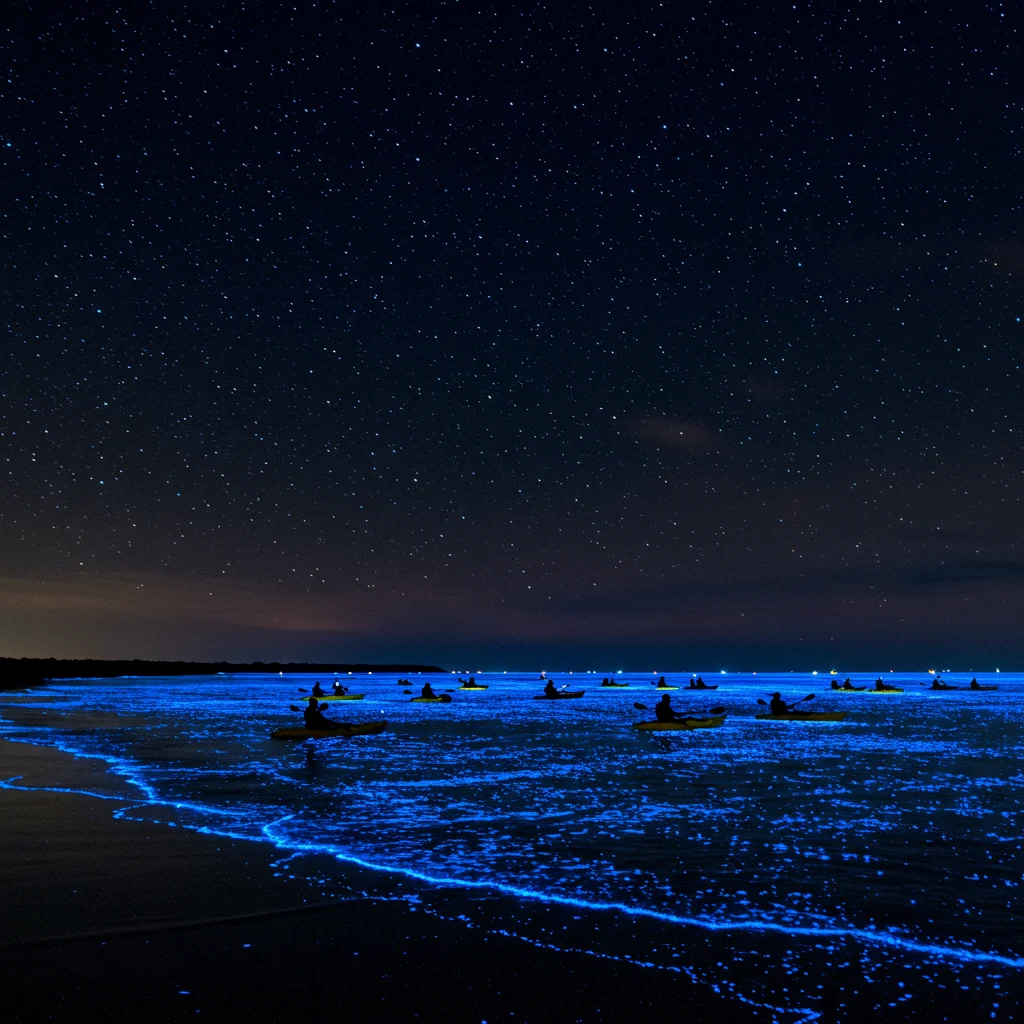
What Are the Current Conservation Efforts?
Ongoing projects include mangrove reforestation, water quality monitoring, and strict tour regulations. Scientists work closely with local authorities to track dinoflagellate health and adapt protection strategies.
How Are Local Communities Involved?
Residents participate in education, advocacy, and guided tours, fostering a sense of pride and shared responsibility. Tour operators often partner with schools and conservation groups to promote sustainable practices.
As experts often say:
“We do not inherit the earth from our ancestors, we borrow it from our children.”
How Is Bioluminescence Reflected in Puerto Rican Culture and Folklore?
The glowing bays have inspired generations of Puerto Ricans, shaping stories, art, and local celebrations.

What Are Some Local Legends and Stories?
Folktales tell of spirits, ancient gods, and enchanted waters. The Taíno believed the glow was a gift from their deities, while Spanish colonists wove tales of mystical creatures inhabiting the bays.
How Does Bioluminescence Influence Art and Festivals?
Local artists capture the bays’ ethereal beauty in paintings, poetry, and music. Annual festivals sometimes feature glowing lanterns and performances inspired by the phenomenon, celebrating the enduring magic of Puerto Rico’s luminous waters.
What Other Nighttime Adventures Await Near the Bays?
The experience does not end with the glow. The surrounding regions offer an array of nighttime activities to enrich your visit.
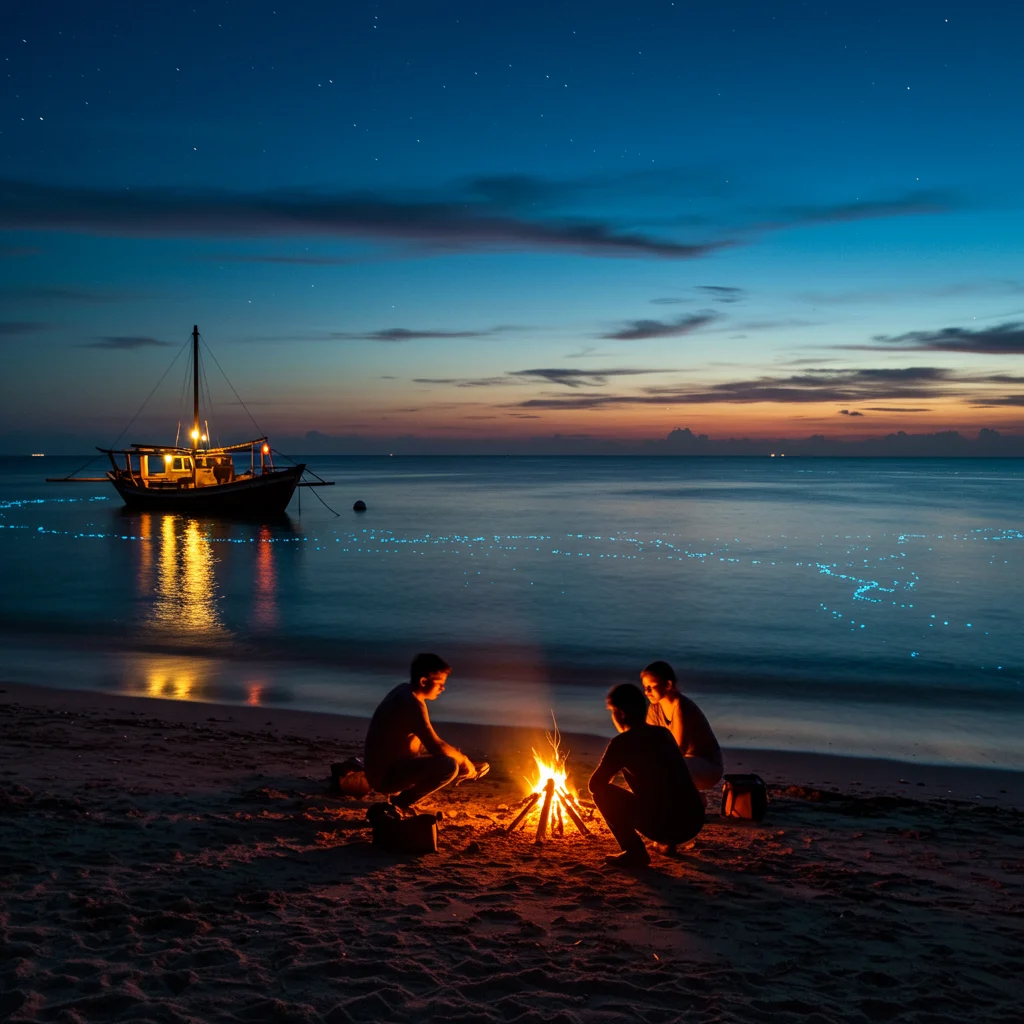
What Stargazing Opportunities Exist?
With minimal light pollution, the skies above the bays burst with stars. Many tours pause to point out constellations, and some visitors bring telescopes for an even closer look.
What Wildlife Might You Encounter?
Nighttime reveals a host of creatures: herons stalking the shoreline, bats swooping overhead, and the occasional iguana or coquí frog calling from the mangroves. The sounds and sights create a sensory-rich backdrop to the glowing waters.
Which Local Cuisine Should You Try After Your Tour?
Nearby towns offer delicious Puerto Rican fare, from mofongo and fresh seafood to sweet treats like tembleque. Sharing a meal after your tour is the perfect way to reflect on the night’s adventures and connect with local culture.
Where Can You Stay Near Puerto Rico’s Bioluminescent Bays?
Accommodations range from boutique hotels to cozy guesthouses, catering to a variety of preferences and budgets.
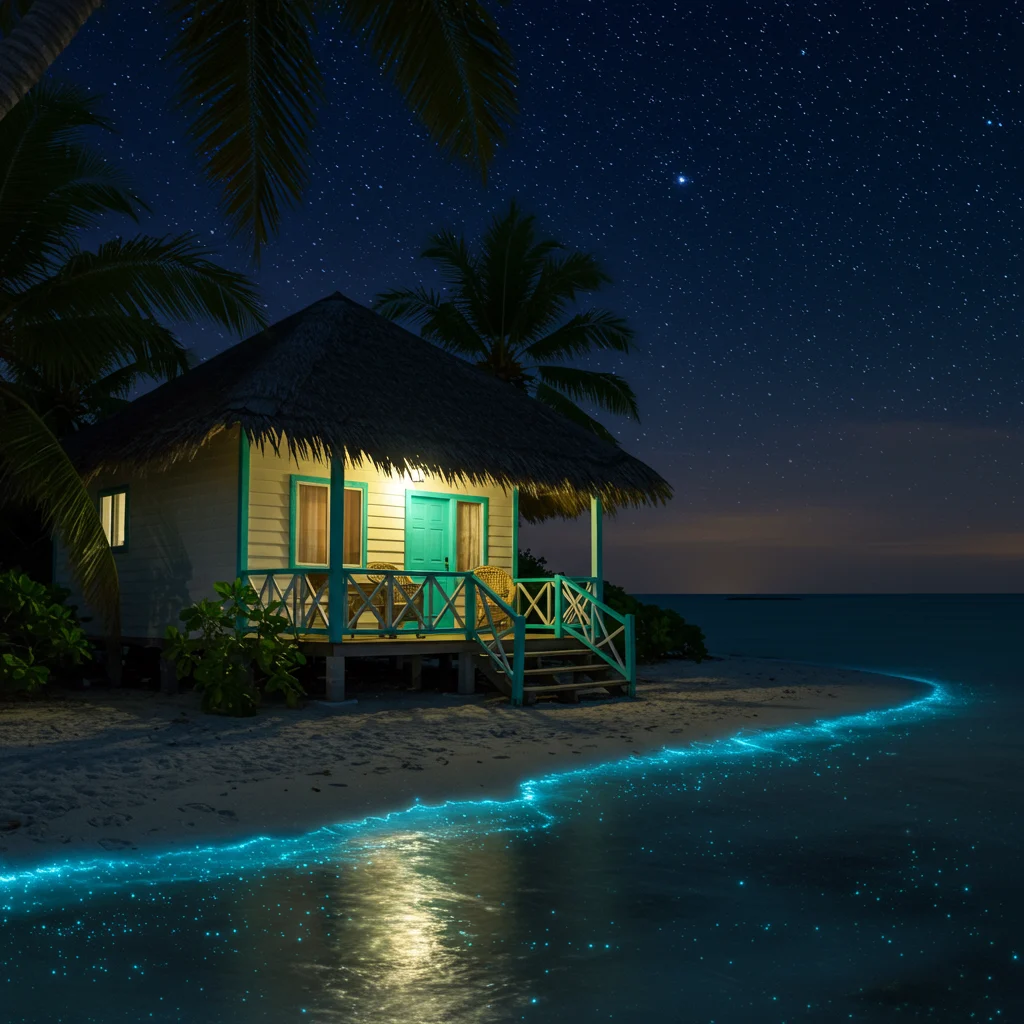
What Are the Best Hotels and Guesthouses in Vieques?
Vieques offers charming inns and eco-lodges, many with ocean views and easy access to Mosquito Bay. Book early, especially during peak seasons, for the best selection.
Which Are the Top Accommodations in Fajardo?
Fajardo features comfortable hotels and family-friendly resorts, some with private docks or shuttles to Laguna Grande. Proximity to El Yunque National Forest is an added bonus for nature lovers.
What Lodging Options Exist in Lajas?
In Lajas, you’ll find welcoming guesthouses and small hotels near La Parguera. Many offer guided tours and local dining recommendations, making them ideal for immersive stays.
How Does Bioluminescence in Puerto Rico Compare Globally?
While bioluminescent bays exist in other parts of the world—such as Jamaica, the Maldives, and Australia—Puerto Rico’s trio stands out for their consistent brightness and accessibility. The combination of natural spectacle, cultural richness, and protective stewardship makes the island a premier destination for bioluminescent tourism.
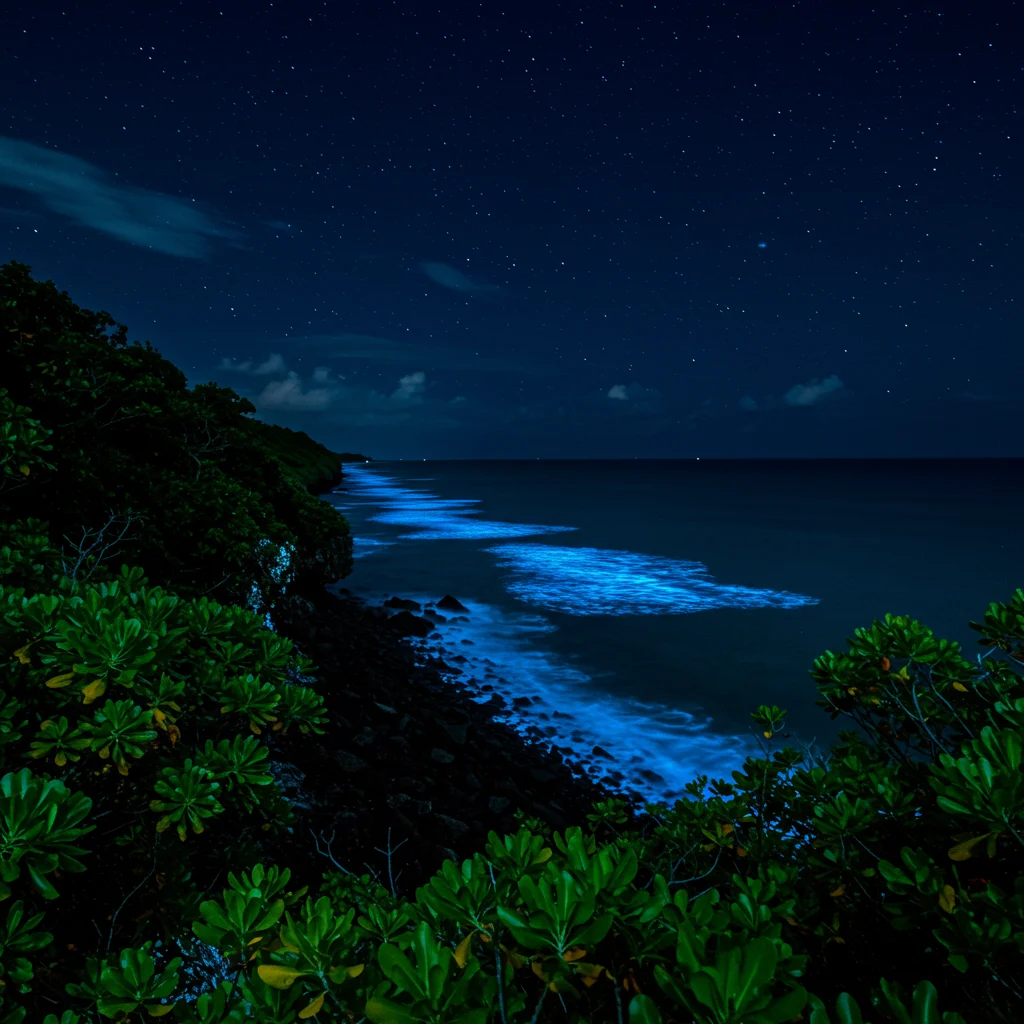
FAQs About Visiting Bioluminescent Bays in Puerto Rico
To help you prepare, we’ve addressed some of the most common questions about experiencing Puerto Rico’s glowing waters.
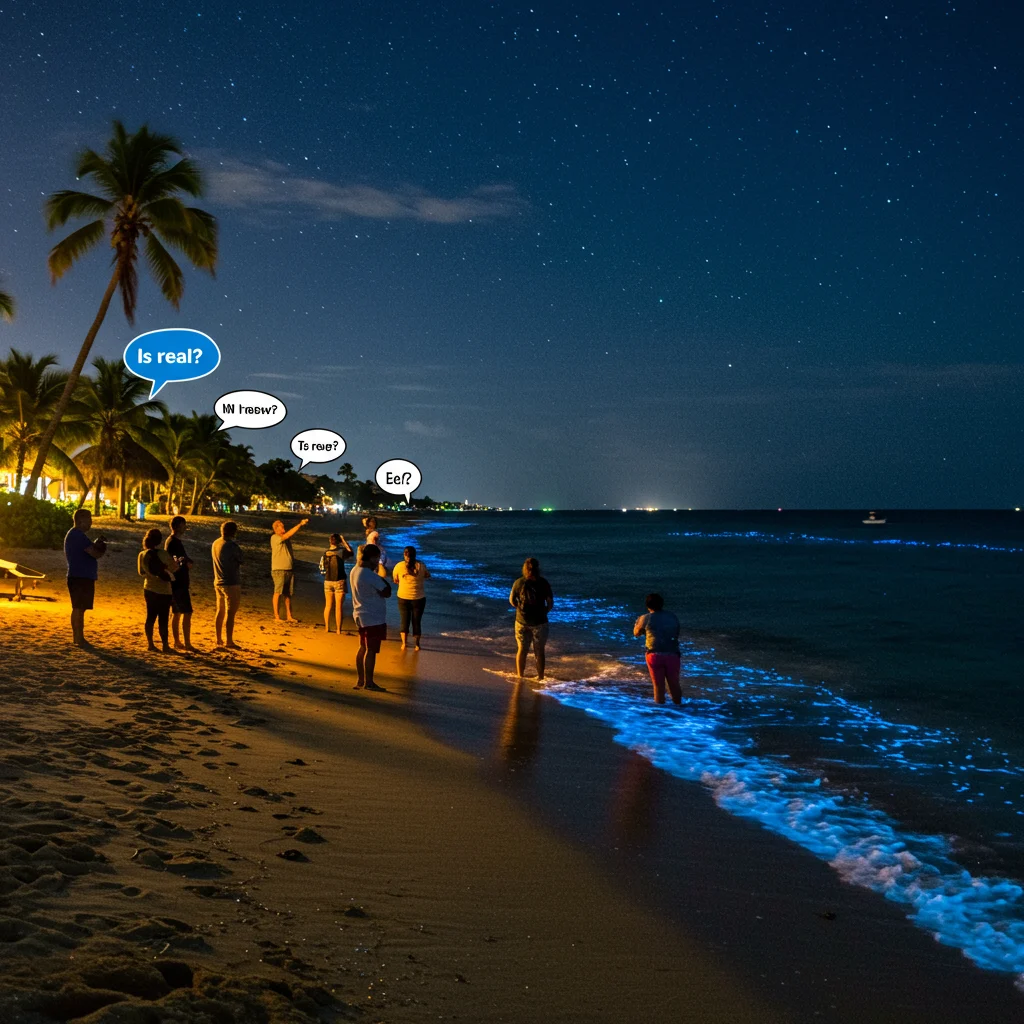
What Is the Best Bay for Families?
Laguna Grande is often recommended for families due to its accessibility and calm conditions. Guided tours cater to all ages and experience levels, making it a safe and enjoyable introduction to bioluminescence.
Are Bioluminescent Tours Suitable for Kids?
Most tours welcome children, though age restrictions may apply for kayaking or swimming. Always check with operators in advance and select tours that provide appropriate safety gear and guidance.
Can You Visit Without a Tour?
Access to the bays is generally restricted to guided tours to protect the ecosystem and ensure safety. Some areas, like La Parguera, offer more flexibility, but we advise booking with reputable providers for the best experience.
What About Accessibility for Travelers with Disabilities?
Many operators are working to improve accessibility, offering boat tours and adapted equipment when possible. Contact providers ahead of time to discuss your needs and review available accommodations.
What Are the Best Sustainable Travel Tips for Your Bioluminescent Adventure?
Traveling responsibly safeguards the bays for future visitors and supports local communities.
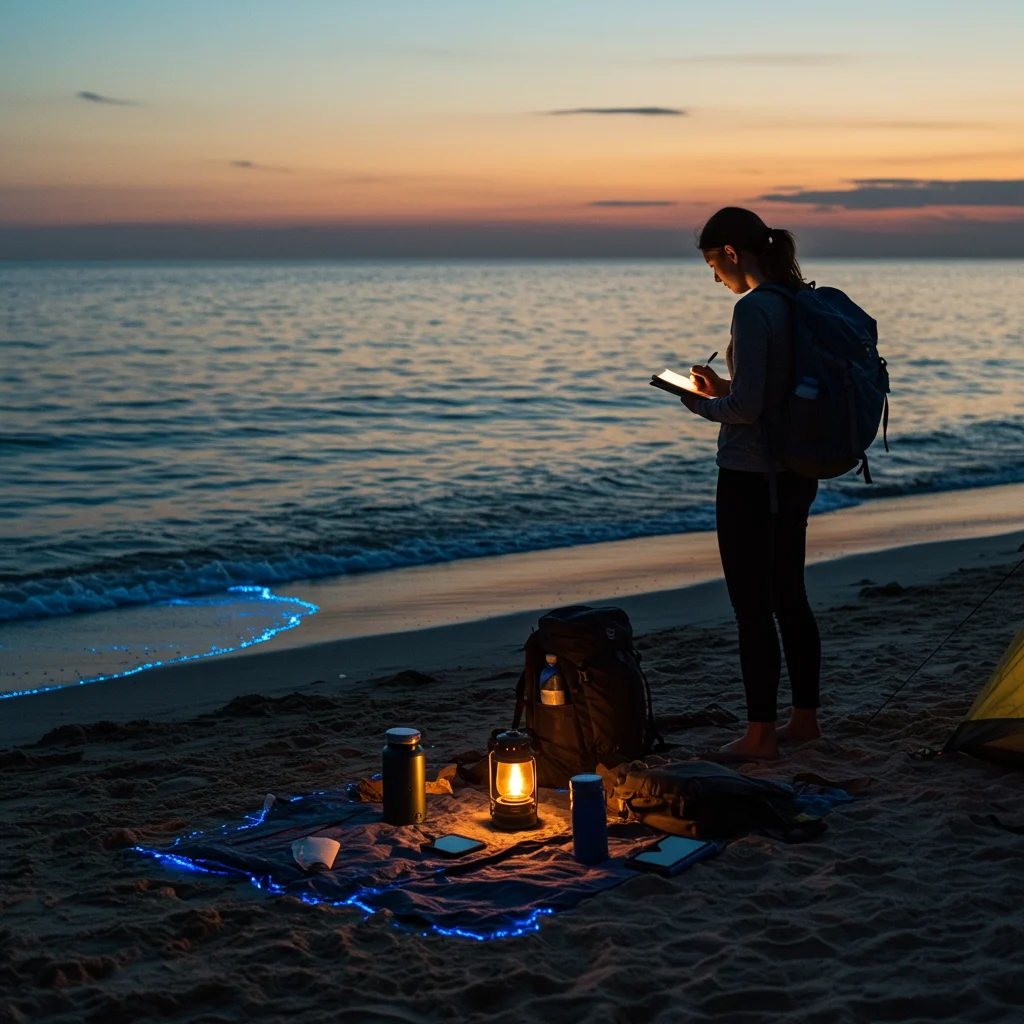
How Can You Leave No Trace?
- Pack out all waste, including food wrappers and water bottles
- Use reef-safe sunscreen and biodegradable insect repellent
- Respect wildlife and avoid disturbing natural habitats
How to Support Responsible Operators?
Choose providers with strong environmental policies, local certifications, and a commitment to conservation. Ask questions about their practices and prioritize those who give back to the community.
Your Bioluminescent Bay Checklist: What to Remember
- Book your tour in advance, especially during peak seasons
- Check moon phases and weather forecasts for the best glow
- Wear quick-dry clothing and bring only essentials
- Follow all safety and environmental guidelines
- Arrive early to allow time for orientation and instruction
For a detailed account of what to expect, you might enjoy reading about a night to remember in Puerto Rico’s Bioluminescent Bay.
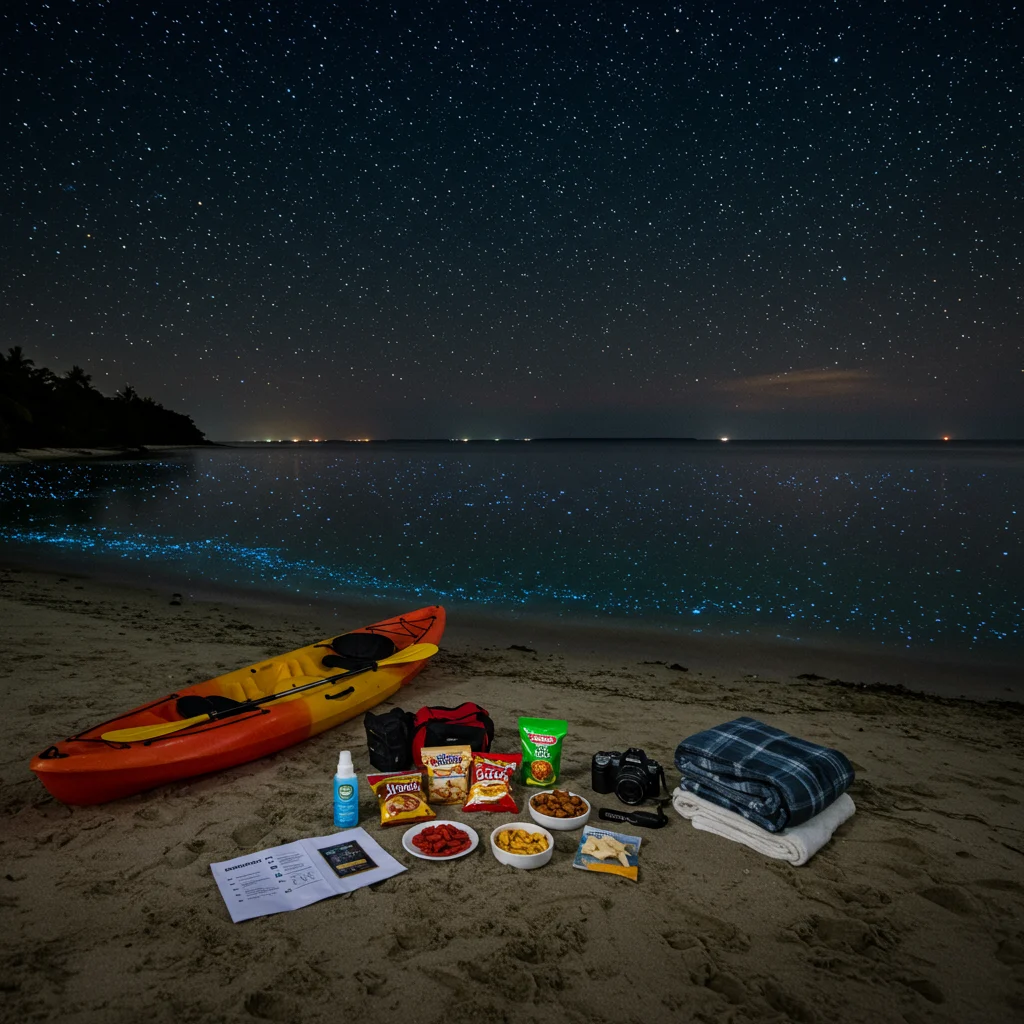
Why Should Puerto Rico’s Bioluminescent Bays Be on Your Bucket List?
Experiencing the bioluminescent bays of Puerto Rico is a rare privilege—an encounter with nature’s artistry that lingers in memory long after the night ends. The combination of glowing waters, lush mangroves, and rich cultural heritage creates an adventure that is both thrilling and deeply meaningful.
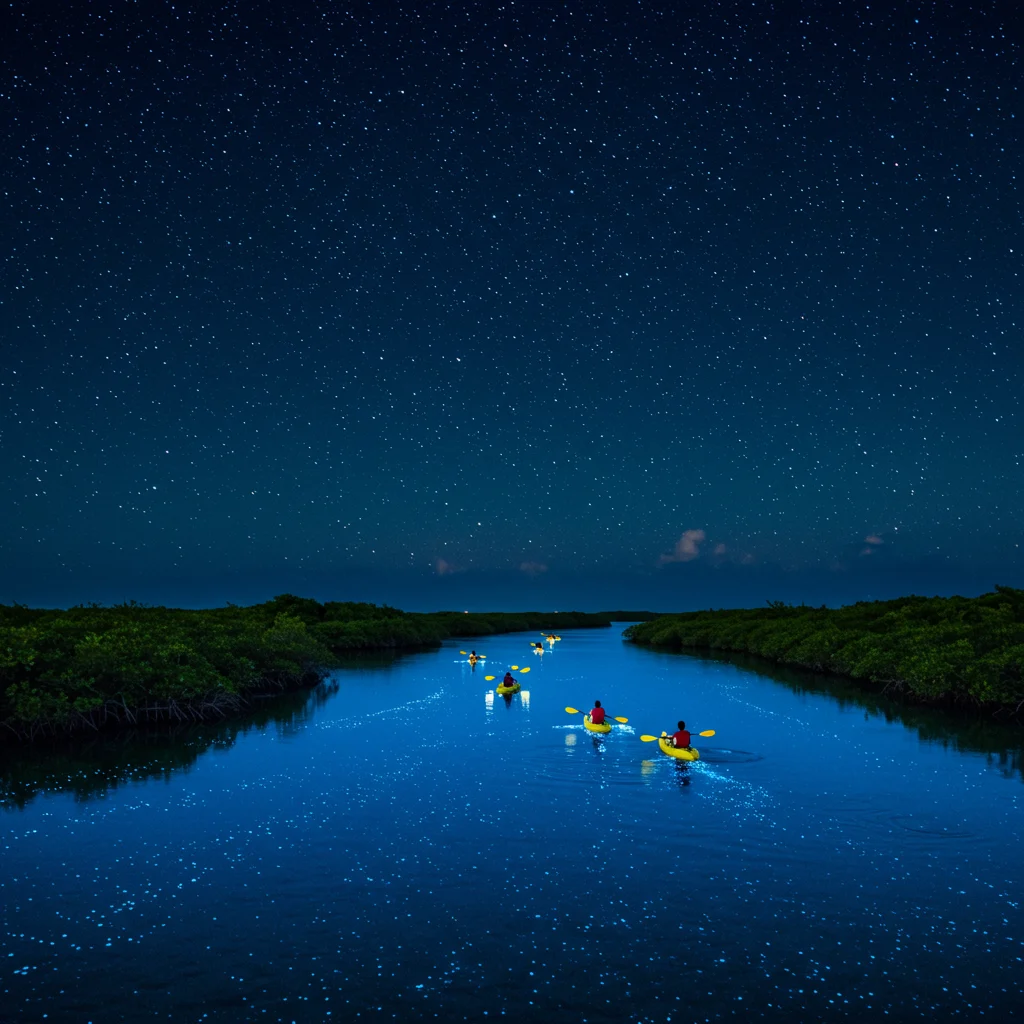
Whether you paddle into the luminous dark, float among the stars, or simply savor the quiet magic of the bay, these moments offer a connection to the world’s hidden wonders. If you are ready to make this dream a reality, Puerto Rico Tour can help you plan your unforgettable journey. Learn more and start your adventure at Puerto Rico Tour.



